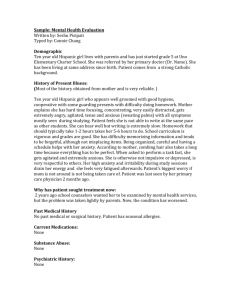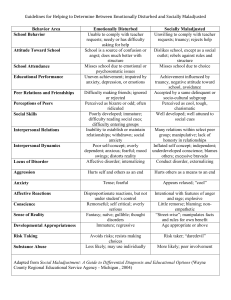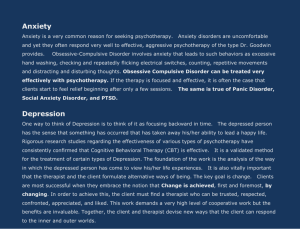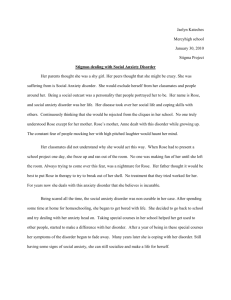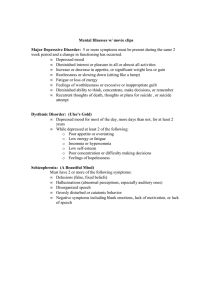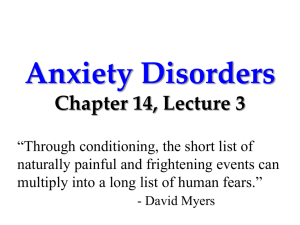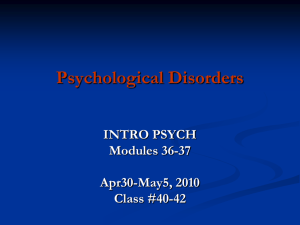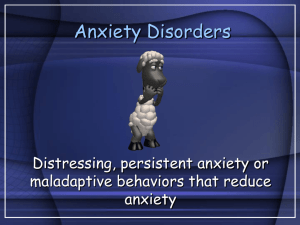Psychological Disorder – a harmful dysfunction in which behavior is
advertisement
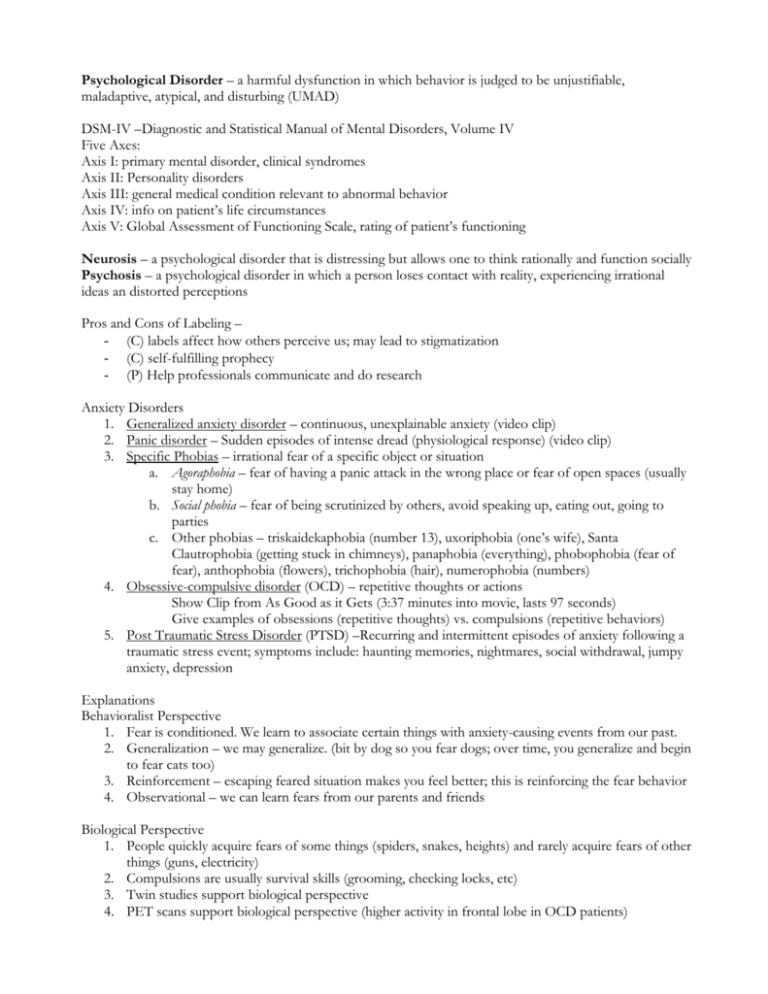
Psychological Disorder – a harmful dysfunction in which behavior is judged to be unjustifiable, maladaptive, atypical, and disturbing (UMAD) DSM-IV –Diagnostic and Statistical Manual of Mental Disorders, Volume IV Five Axes: Axis I: primary mental disorder, clinical syndromes Axis II: Personality disorders Axis III: general medical condition relevant to abnormal behavior Axis IV: info on patient’s life circumstances Axis V: Global Assessment of Functioning Scale, rating of patient’s functioning Neurosis – a psychological disorder that is distressing but allows one to think rationally and function socially Psychosis – a psychological disorder in which a person loses contact with reality, experiencing irrational ideas an distorted perceptions Pros and Cons of Labeling – - (C) labels affect how others perceive us; may lead to stigmatization - (C) self-fulfilling prophecy - (P) Help professionals communicate and do research Anxiety Disorders 1. Generalized anxiety disorder – continuous, unexplainable anxiety (video clip) 2. Panic disorder – Sudden episodes of intense dread (physiological response) (video clip) 3. Specific Phobias – irrational fear of a specific object or situation a. Agoraphobia – fear of having a panic attack in the wrong place or fear of open spaces (usually stay home) b. Social phobia – fear of being scrutinized by others, avoid speaking up, eating out, going to parties c. Other phobias – triskaidekaphobia (number 13), uxoriphobia (one’s wife), Santa Clautrophobia (getting stuck in chimneys), panaphobia (everything), phobophobia (fear of fear), anthophobia (flowers), trichophobia (hair), numerophobia (numbers) 4. Obsessive-compulsive disorder (OCD) – repetitive thoughts or actions Show Clip from As Good as it Gets (3:37 minutes into movie, lasts 97 seconds) Give examples of obsessions (repetitive thoughts) vs. compulsions (repetitive behaviors) 5. Post Traumatic Stress Disorder (PTSD) –Recurring and intermittent episodes of anxiety following a traumatic stress event; symptoms include: haunting memories, nightmares, social withdrawal, jumpy anxiety, depression Explanations Behavioralist Perspective 1. Fear is conditioned. We learn to associate certain things with anxiety-causing events from our past. 2. Generalization – we may generalize. (bit by dog so you fear dogs; over time, you generalize and begin to fear cats too) 3. Reinforcement – escaping feared situation makes you feel better; this is reinforcing the fear behavior 4. Observational – we can learn fears from our parents and friends Biological Perspective 1. People quickly acquire fears of some things (spiders, snakes, heights) and rarely acquire fears of other things (guns, electricity) 2. Compulsions are usually survival skills (grooming, checking locks, etc) 3. Twin studies support biological perspective 4. PET scans support biological perspective (higher activity in frontal lobe in OCD patients)


